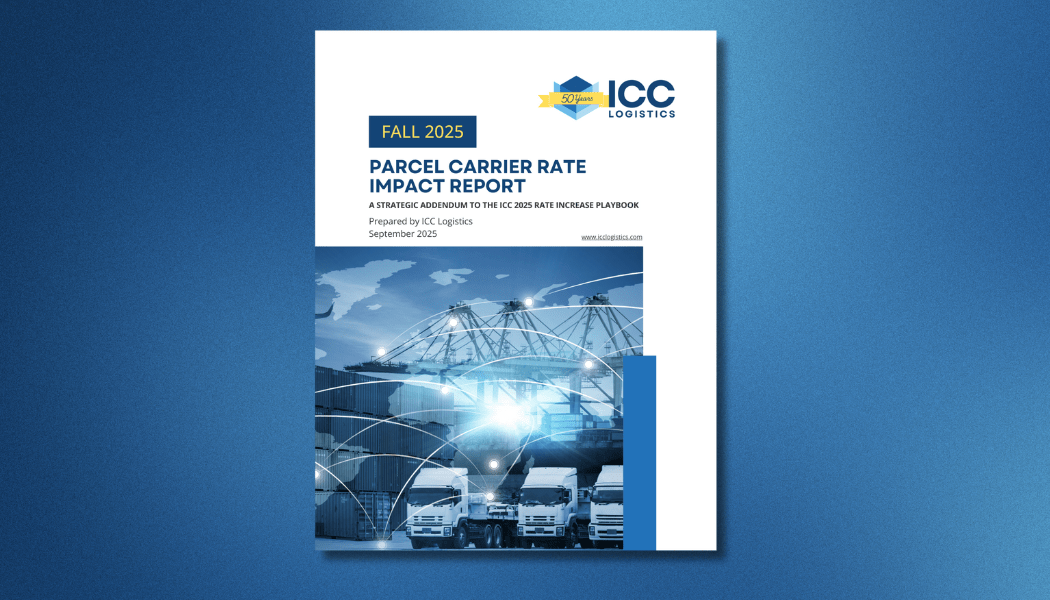UPS Quietly Raises Zones – Again
On March 24th, 2025, UPS once again quietly made changes to “certain origin/destination zip code pairs.” These changes resulted in the increase and, in some cases, decrease of the zone for some shipments. However, most of the changes involve increases in zones and therefore, increases in costs. This marks the fourth time UPS has made these types of changes in a little over a year. They made similar changes in December 2023, as well as in June and October of 2024.
No Transparency, No Details, and Big Cost Impacts
Similar to the first three times that UPS implemented these changes, the latest announcement failed to provide any specifics of the changes that were to take place. Therefore, most shippers have no way of knowing what impact these changes will have-or have already had-on their costs, and ultimately, their profit margins.
Given the surreptitious nature of these zonal changes, ICC has chosen to perform ongoing analysis to help shippers understand the potential impact these changes could have on their bottom lines.
Real-World Impact: Up to 100% Cost Increase
An increase in Zone can have a major impact on the cost to ship a package. Our analysis has shown that an increased Zone can drive up the published cost of shipping a single Ground package by as much as 25%, as well as 50% for 2nd Day packages, and up to 100% for Next Day Air packages.
Want to see the cell-by-cell impact? Contact Tim Binkis, Chief Client Success Officer at ICC Logistics, for a detailed breakdown.
75 Origins Analyzed: Where the Increases Hit
With our analysis, we looked at Zone charts from 75 different origin locations. Most of the zone charts that we used in our analysis included zip codes that are popular locations for Warehouses, Fulfillment Centers, and Distribution Centers. These included zip codes in New York, Chicago, Dallas, Phoenix, Indianapolis, Los Angeles, Allentown, Atlanta, Memphis, Salt Lake City, and more.
The March 2025 Data: 66.3% Increased Zones
Our analysis of the latest Zonal changes on March 24th indicates results similar to those of the recent past. This time there were a total of 588 changes, with 390 or 66.3% being to higher zones.
When we did the comparison in October 2024 to the June 2024 zone charts, there had been 811 zone changes, with 70% (or 568) changing to a higher zone. Not as many changes occurred this time around, but once again, the majority were jumps to higher zones.
A majority of the most recent zone jumps were from zone 4 to zone 5 (18%). After that, the largest jumps were from zone 3 to zone 4 (13.8%), zone 5 to zone 6 (11.7%), and zone 6 to zone 7 (10.9%).
It’s Not One Change – It’s the Accumulation
Although the number of zone changes that occurred this time is a small percentage of the total number of zip code pairs that exist, there are a few important highlights to consider.
Given that this is the fourth time these changes have taken place in about a year, the total number of zone increases is starting to add up. Increasing the Zone on 500 zip code pairs doesn’t sound like a lot, but when multiplied by 4 rounds, the number of changes is growing into the thousands.
Why It’s Strategic (and Ongoing)
When is this going to end? In our opinion, it probably won’t. If UPS keeps making these changes with little pushback from shippers, why wouldn’t they continue sneaking them in?
Most Increases Target High-Population Areas
The only way to determine the true impact of these changes is to fully analyze your actual shipping activity. Given that most increases appear to be for shipments going into higher-population cities, this could be seriously eroding profits for many shippers.
It’s Not Just Zones: Expect More in 2025
We’re certain that there’s more to come from both UPS and FedEx as we move deeper into 2025. The number of rate/rule changes announced since the General Rate Increase just three months ago is astounding.
That 5.9% increase they announced? It was just the start. At the rate they’re going, we may see another 5.9% by the end of this year.
What You Can Do: Analyze Your Actual Shipping Data
If you don’t mind losing money, then no reason to reach out to us!
However, if you’re concerned about ongoing profit margin erosion, we recommend a True Rate Increase Impact Analysis – built around your company’s actual shipping data.
Contact Tim Binkis, Chief Client Success Officer at ICC Logistics to get started.



 to receive our FREE white papers:
to receive our FREE white papers: